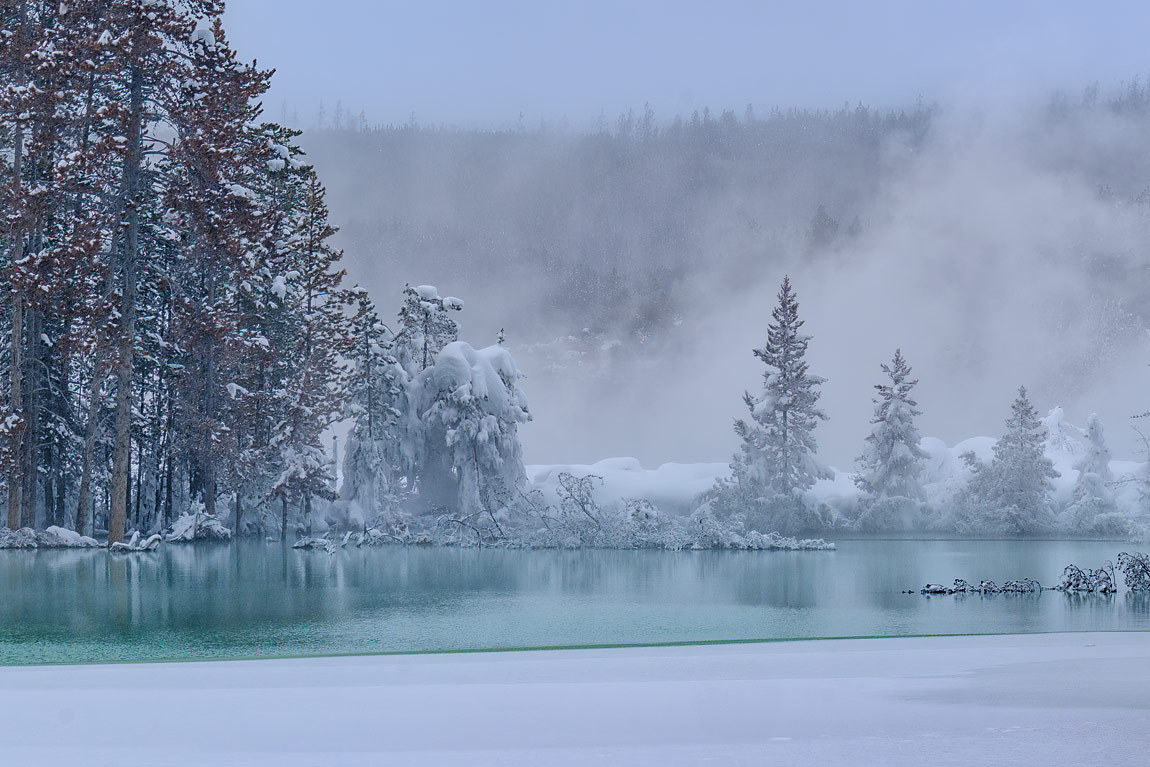Winter in Yellowstone National Park transforms its landscape into a snowy wonderland full of active wildlife, contrast, extra steamy geothermal features, and…no cars. On my week-long park tour last January, I was treated to a landscape enveloped under heavy snowfall and sub-zero temperatures.
The tour emphasized wildlife, but heavier than normal snowfall caused elk and other animals to leave the park's elevations for food lower down. So, we shifted our attention to the landscapes that make Yellowstone unique. The location for this image was among them.
Nuphar Lake is proximate to the Norris Geyser Basin and is visible from the main road. The thing that makes this lake unique is that it has no thermal input on its bottom to account for its color and properties. The cause is the recent increase in thermal water flow from a ridge above the neighboring basin that has jumped into Nuphar Lake. A lake normally blue in color and frozen in winter has shifted to an aqua green and the northern portion remains unfrozen. Minerals and the warm water of the hot spring of the new flow are altering the lake. Of significance is also the marked death of trees caused by the rising mineral-rich, warm water on the edges of the lake.
Because of the thick forest along the road and the 5-6' snow, my angle of view options were very limited. I was able to capture a view through the trees that showed the eerie vapors of the geyser basin in the background, the dying, snow-covered trees on the lake edge, and the partially frozen lake in the foreground.
The light was low near the day's end and very windy, so I had to increase the ISO to 500. A tripod allowed a 1/125 sec exposure. In hindsight, I could have opened the lens to F8 to capture more light and faster shutter speed.
Yellowstone is a treasure, and visiting it in the winter has been inspirational.


